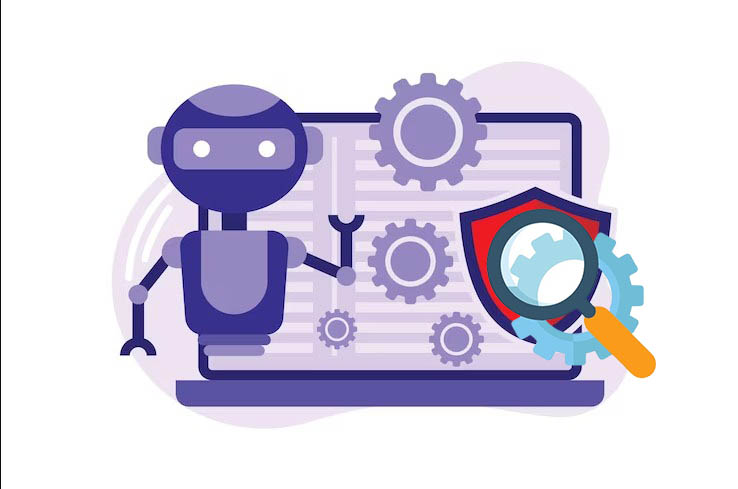The financial industry is going through of a radical transformation as a result of digitalization and breakthroughs of emerging technologies. Inflating technology counts as the current major backbone of the banking sector and there is a crucial need to offer services in a way that guarantees quality and efficiency. In the same way, if the software used by banks for processing transactions is expected to operate smoothly and flawlessly, then it should also remain free of errors.
Online banking has been the core in all the customer-facing channels which include fintech and banking so the need for swift Software testing to provide customers with permanent solutions has risen. In running an effective app, especially for banking, which is the hands and feet of millions of transactions every year, a high-performing app is needed most, which must work full-time to meet users’ increasing needs. This is a major property of banking apps that is obligatory to be faultlessly examined if it needs to be operational and reliable.
This specific point is the most valuable one and for banking apps to give a guarantee of safe and secure transactions, the software testing would have to perform guaranteed end-to-end software testing. To achieve the same, it is like, incorporating various approaches of Software Testing Services India would be more practical. Also, the software testing part is a time-consuming and complex process as banking software applications are difficult to analyze since they involve a large amount of coding and dependencies.
Why is Banking Application Software Testing Important?
Users frequently access banking apps using mobile devices. Users may be in danger of device breach, data leakage, or unauthorized access to financial services due to operating system vulnerabilities, safe authentication token storage, or a lack of encryption on locally stored data.
Not Enough Authentication Systems Static PINs and easy passwords are examples of weak or antiquated authentication techniques that provide serious security issues. Multi-factor authentication (MFA) and biometric authentication should be used in banking apps to improve security and stop illegal access to accounts.
The applications must:
- Ensure safety and anonymity in transactions with reliable data encryption.
- perform organizational actions consisting of multiple levels throughout which they should serve companies and each of the customers that are running concurrently.
- Having the capacity to fully adapt by seamlessly integrating with a wide range of other applications
- they need to have a capacity to not only keep businesses running seamlessly, but also work with even the most complex business processes.
- transactions should be executed in real-time without any delays that portray a quality delivery to consumers.
- the programs should be in a position to do multiple transactions, which shall be done at a reduced speed.
- the applications have to give people the possibility to follow minutely every financial operation and showcase for them.
- Banking apps must have a system of storage security that has all of a user’s confidential information.
- The systems need to be equipped with a disaster or recovery management subsystem to help users avoid injuries that may occur from many dangerous situations.
- The app developers should necessarily be ready to solve any problem that users may report to reduce the cases where clients are chased away by defects and bugs.
Why Do Banking Apps Need To BE Testified?
1. Testing of banking apps: Regulation & Compliance: Transparency in business is receiving more attention. worldwide, and strict adherence to particular regulatory compliance requirements is required. Therefore, to meet the numerous criteria and conditions of open banking APIs, effective software testing is necessary.
2. Digital Convergence: With the rise of smartphones, tablets, and Internet of Things-based gadgets, digitalization has brought about a paradigm change in the banking services industry. End-to-end software testing is crucial for paperless monetary transactions, which have been made easier by digital payments.
3. Improved User Experience: Modern consumers have ever-evolving expectations and are tech-savvy. The core of any business is the customer experience (CX). A greater focus is placed on program features including superb user interface (UI), stability during peak loads, and usability. To accomplish all these complex features, thorough usability softwaer testing For optimal performance and a wonderful guide for user experience testing (UX), end-to-end performance software testing is also necessary.
4. Efficient and faster transactions: To guarantee efficient transactions for users, banking apps need solid payment gateway connections. Effective software testing is required to do this.
5. Secure and Safe Transactions: Ensuring secure transactions and protecting sensitive client data are the top priorities for any banking app. Because cyberattacks are so common, banking apps must go through extensive security testing to safeguard and provide a secure environment for client transactions.
6. Emergence of New Technologies: Voice recognition apps and browser service applications are two major ways that mobile banking has changed to swiftly reach more clients. These applications have to be carefully tested to guarantee a faultless experience before going live on the market.
What Steps Are Included in the Testing of Banking Apps?
Data Segregation: Research is the first phase in the banking app software testing process, which involves learning about the relevant area and comprehending the expected industry standards.
Finding the necessary tests: Software testing requirements are established to satisfy the functional and business goals based on the research that has been done.
Test cases for banking applications are created: A software testing suite for online banking applications is made based on the application’s functionality, user experience, performance, and security features.
Functional testing implementation: Test cases are reviewed, executed, and prepared for to verify and ascertain whether the necessary capabilities are provided as anticipated. This includes ensuring the ability to securely accept payments online, confirming that the system can handle payment transactions seamlessly without compromising security
Database structure validation: Information should be kept in a simple, organized manner and adhere to data restoration procedures.
Data Encryption and Authentication: To make sure that no data breach is recorded in the banking app, both data encryption and user authentication are evaluated. Banks must put in place a multi-layer validation procedure, such as One Time Passwords, to accomplish this. Security testing may be done automatically with technologies like HPWebInspect and IBM App ScaBy the n, and many times through hand-in-hand testing by employing tools like HTTP watch, Proxy Sniffer, Paros Proxy etc.
Analyzing App Usability: To make sure the app is usable for all, the tests are conducted to predict how much it is taking to put the app into use throughout the system.
Validation of App Performance: First, browser compatibility is checked. The banking applications’ functionality elements and the speed at which pages load on various browsers are observed.
Verification of User-Acceptance: The category of testing is continuous in this case, where the banking application is tested to avoid any errors and fulfillment of user requirements. Peer and widespread user testing is the next phase where every flaw is influenced while the application operates in actual conditions.
Risks to Security in Banking Applications:
Phishing Attacks Aimed at Customers: Spearphishing emails, domain spoofing, decorated text messages, and malevolent malware are some of the common cyberattacks faced by banking apps. Stealing the login information is one tool to wreck the security of users that these duplicate sites employ.
Data breaches and information theft: The financial applications of banks, such as checking accounts, transaction records, and private details, are the personal client data being stored. Issues or inconsistencies with applications may open up client information to a breach. Once such revelation occurs, the client’s monetary security and even identity could be undermined.
Man-in-the-Middle (MitM) Attacks: An attacker may be able to capture and spoof the trips taken between the banking application and its servers or exploit the weakness of the communication channels. Human acts of interception such as MitM, on the other hand, offer hackers the chance to change the data or eavesdrop on private transactions and they even introduce malicious code into communication channels.
The Role of Software Testing in Financial Regulations
The FinTech industry has experienced significant growth and now offers a variety of financial software testing solutions.
Sample Test Cases for Banking Application
User authentication:
When a wrong login is attempted using wrong credentials like passwords or usernames add the relevant error messages in no time. Ensure that the account recovery and password reset processes of the “Forgot Password” are carried out properly.
Account Management:
Verify whether the specified details on new account subscriber data are authentic and different from each other, when the accounts are created. Verify that users can view such data as account balance, transaction history, and personal details. By ensuring their privacy, your platform gains trust and builds a reputation for being a reliable service, which can lead to increased user engagement and loyalty. Perform the update operations on your app user’s account, including link/unlink, modify some details, and set new passwords.
Exercise a first-hand experience of transferring money between accounts by sending it to both the internal and external banks that you belong to, using transaction processing. Double-check the transaction amount to see that it gets properly paid from one account instantly to the other after deducting it once from the source account. Confirm the cost of a transaction, its restrictions and the state of updating the transaction. The number of possible outcomes includes the transaction being underway, occurring, or waiting.
Security Features:
Carry out a test of the sessions terminating after an established period of inactivity by testing session management. Let have it in mind that passwords and account numbers, to mention but a few, should be encrypted both within the transmission and storage. One of the strategies I propose for finding and resolving vulnerabilities such as SQL injection, XSS, or weak authentication, is to carry out penetration testing and vulnerability assessment.
With mobile banking, if relevant:
Make sure that query messages should be understandable, clear of intentions, and communicated to users in such a way that it will become easier for them to debug their error.
Regulation and Compliance Needs:
Carry out the verification of whether the chosen banking app satisfies the requirements of the consumer protection laws, data privacy, and security.
Challenges in Banking Application Testing
• Difficulty in maintaining consistency across devices and systems: Because banking apps are essential to consumers, developers must make sure they work well for customers. The application must function reliably in a variety of browsers and operating systems. The Both the most recent and older versions of iOS and Android smartphones should be able to utilize the app.
• Data transfer issue during system migration: Software testing banking apps during system migration, or the transition from the old to the new system, presents several difficulties. It is important to test every step of the process, from beginning to conclusion. Therefore, before transferring and uploading the data to the new system, the team must take these needs into account and ensure that the data is identifiable.
• Difficulties with real-time updates: The teams must confirm the reliability of the mobile banking applications to address and give users of the apps real-time updates. There is a significant issue when conducting integration software testing because It must handle various urgent problems.
• Difficulty when fulfilling customer requirements: Developing banking apps that satisfy users’ expectations and obtain all necessary information to provide the best experience possible for users is a challenge for the teams.
• Difficulty adapting to consumer trends: As the market continually shifts, so do consumers’ desires to experience and own the newest features. It’s critical to monitor industry developments and create applications that captivate people.
In conclusion, banking applications are essential since they handle millions of transactions and are closely connected to clients. Therefore, it is imperative to evaluate these apps using a variety of software testing techniques, including load/performance testing, security testing, usability testing, and To guarantee flawless, completely functioning, and high-performing applications, functional testing needs to be done. Leveraging the full benefit of testing banking apps is possible when you collaborate with Next-generation QA specialists.



